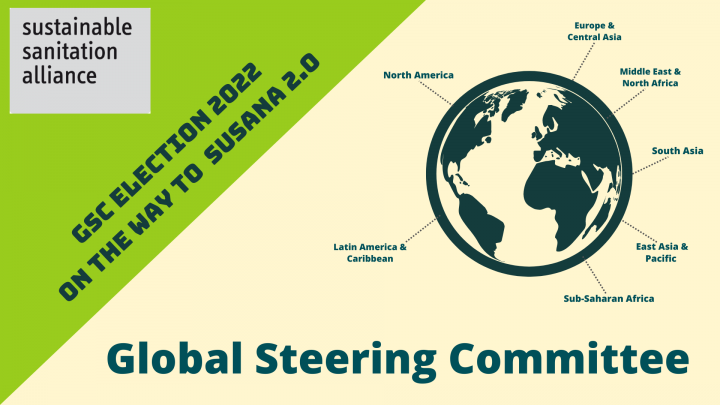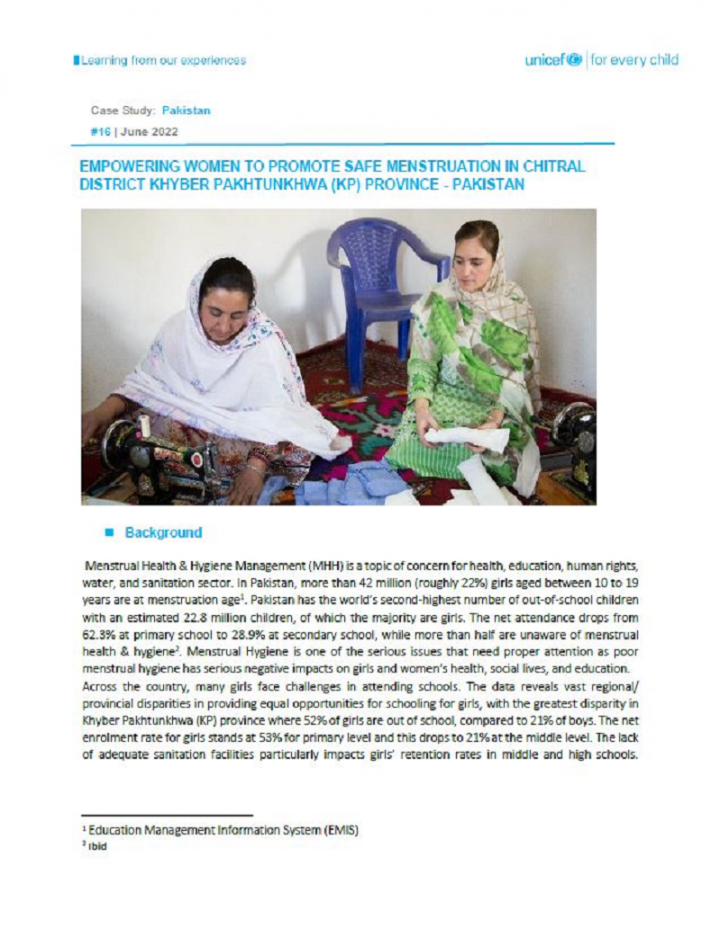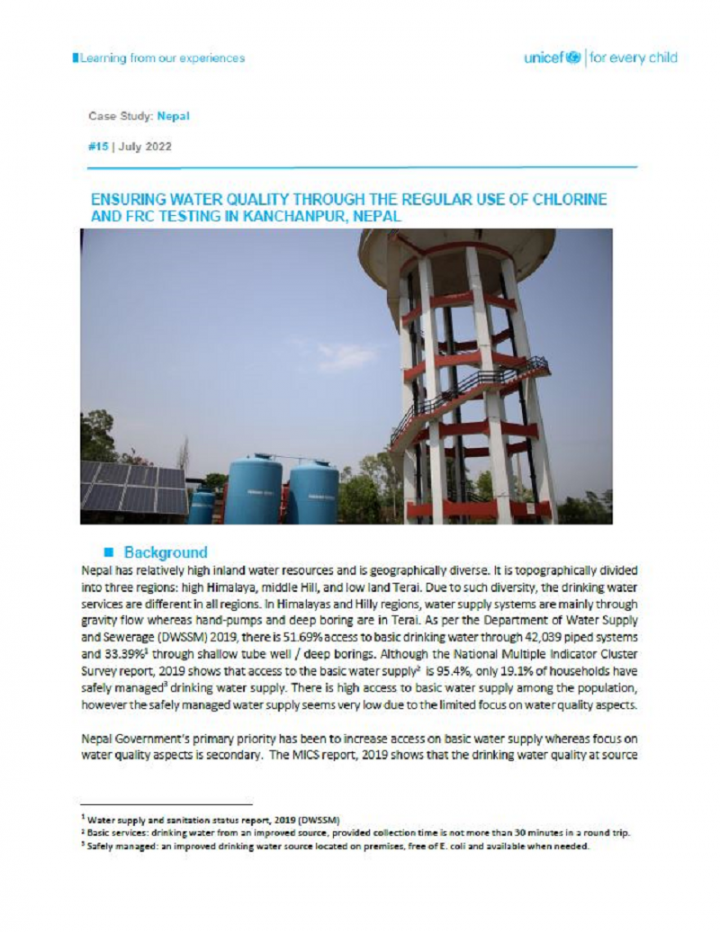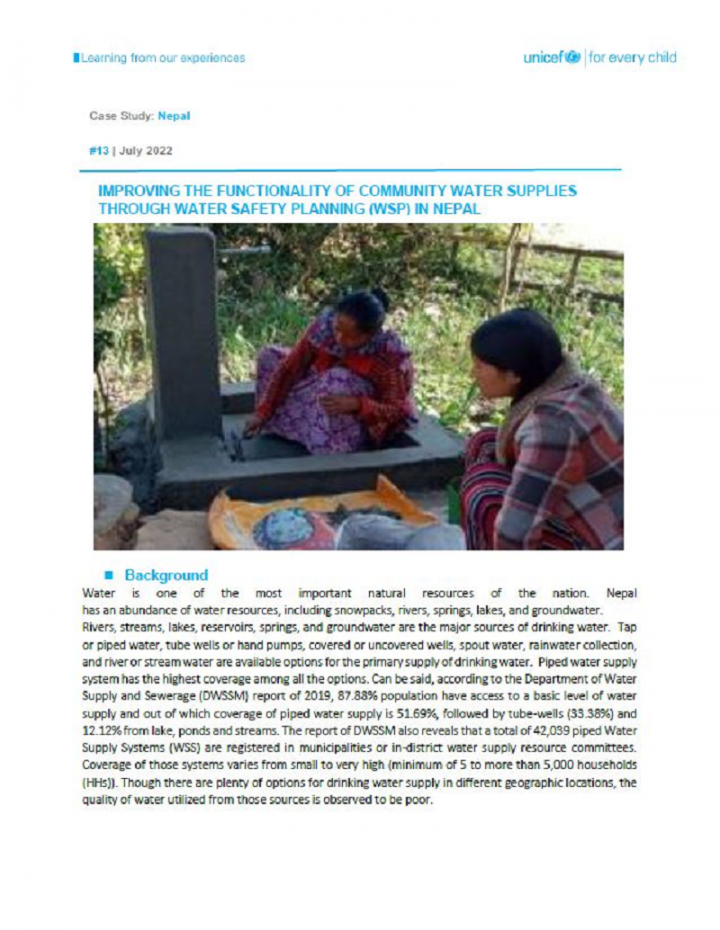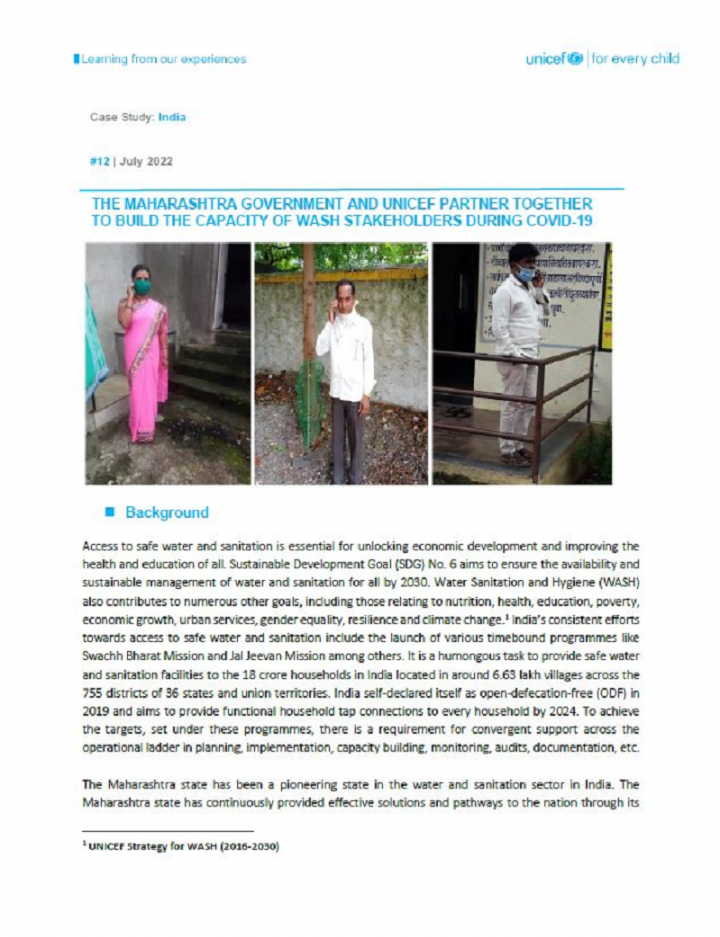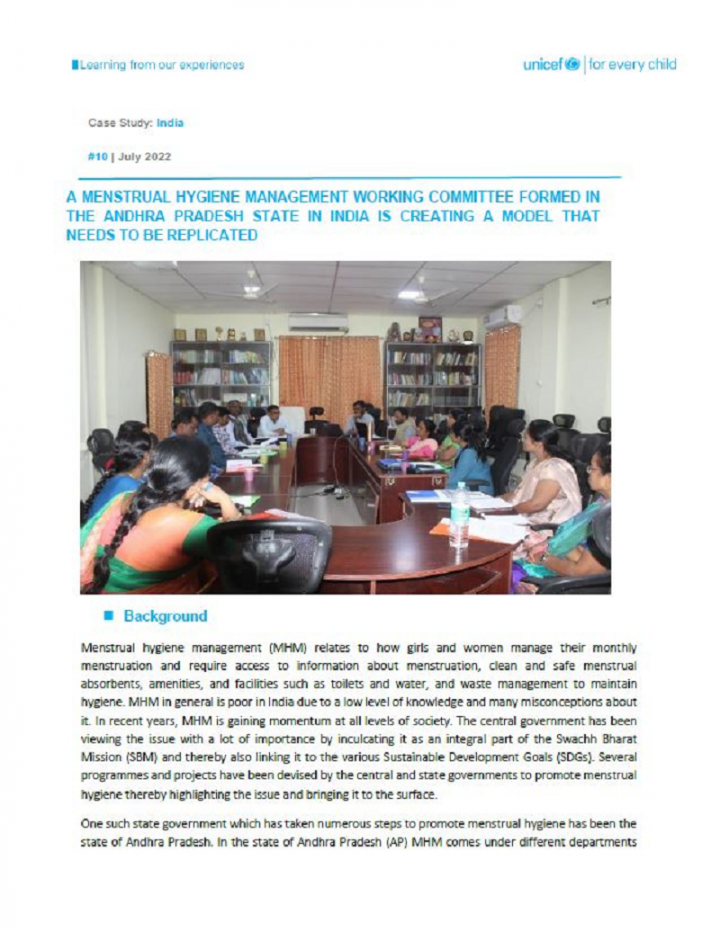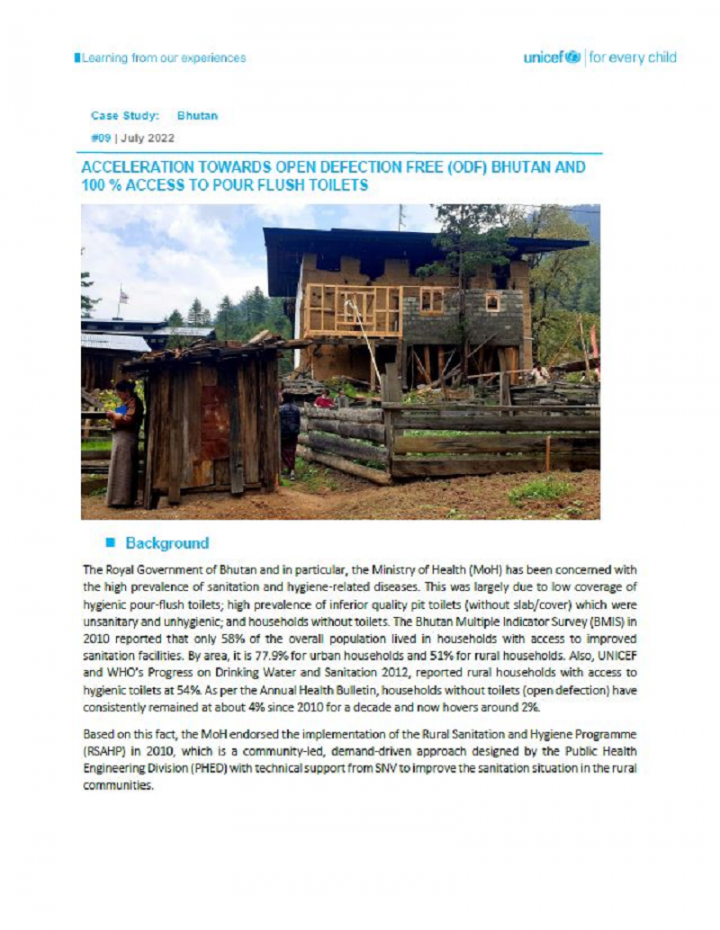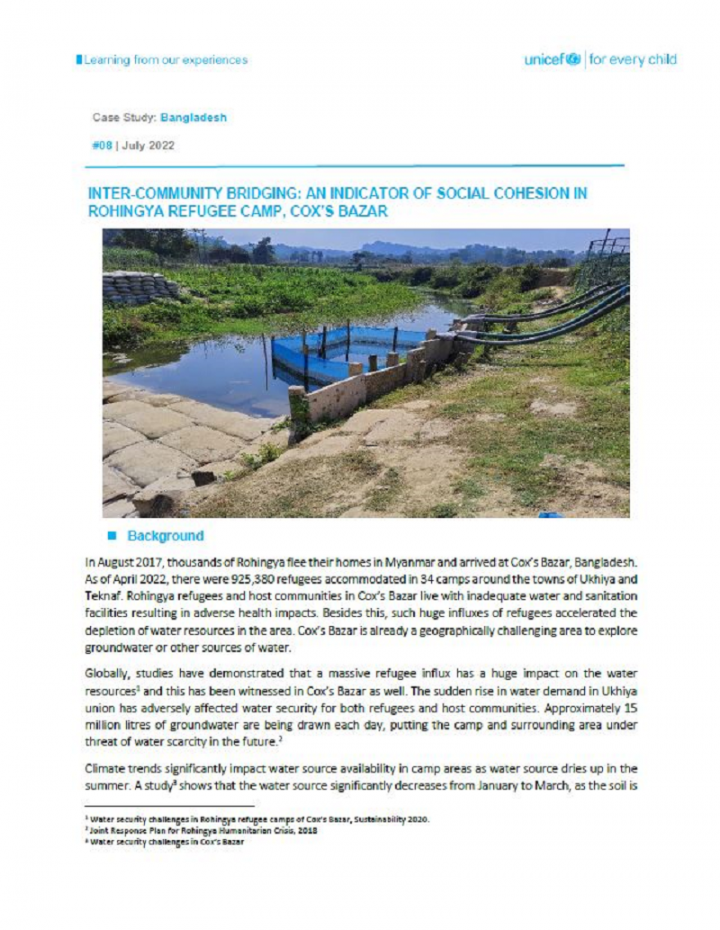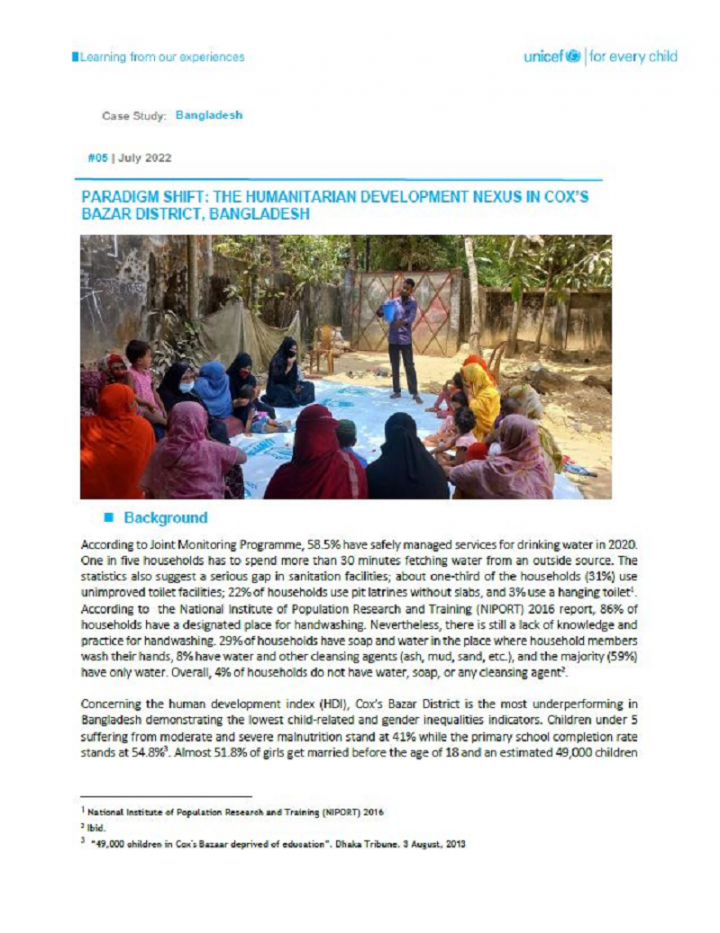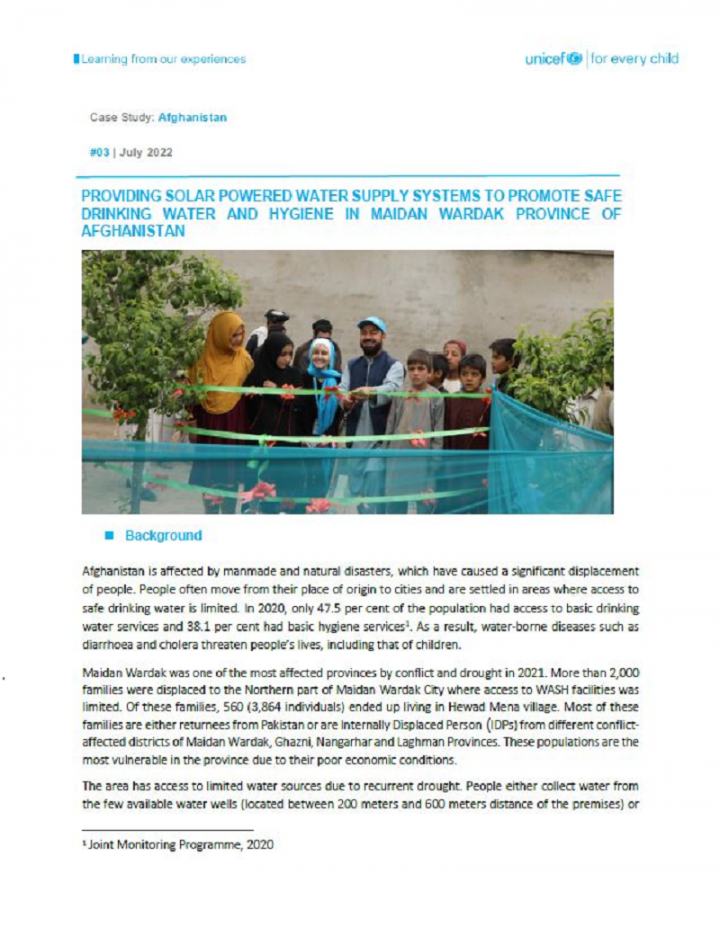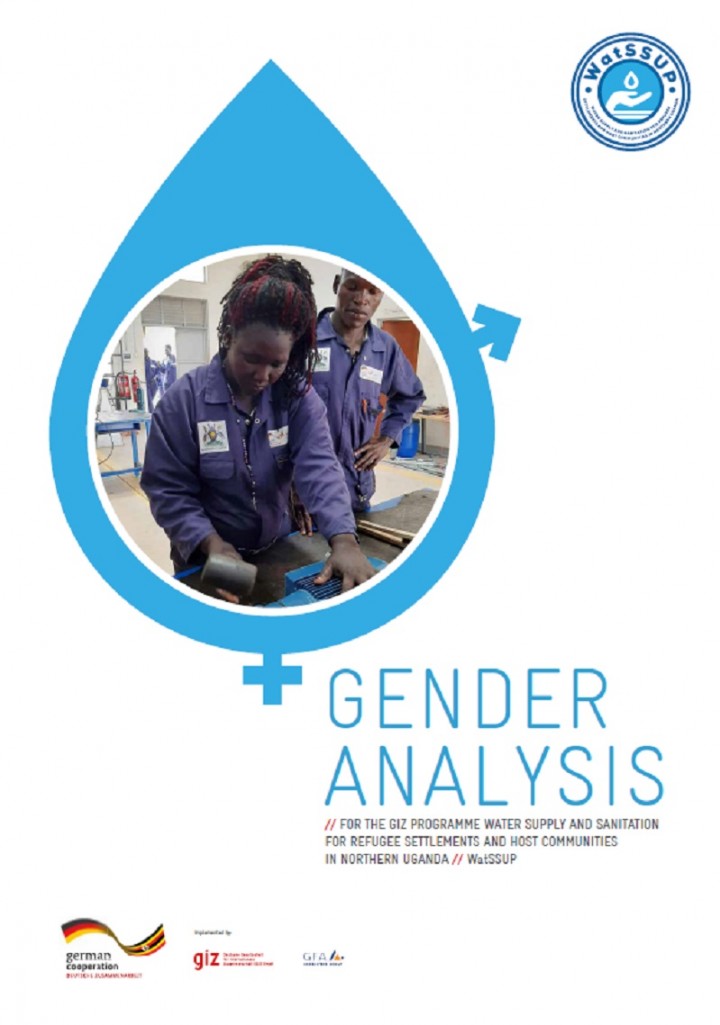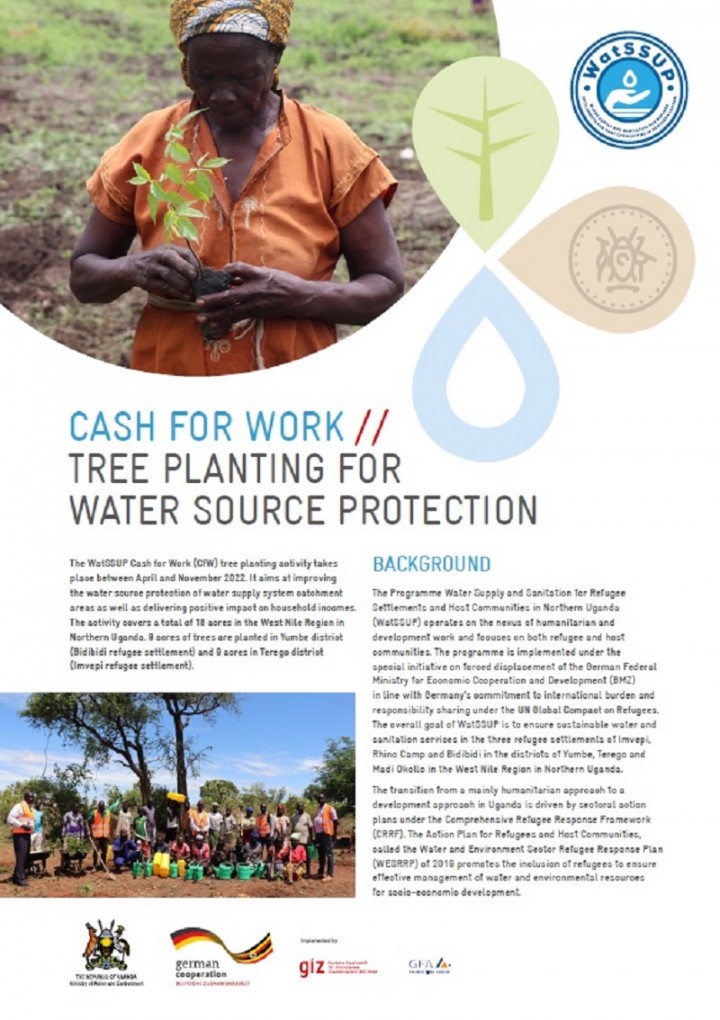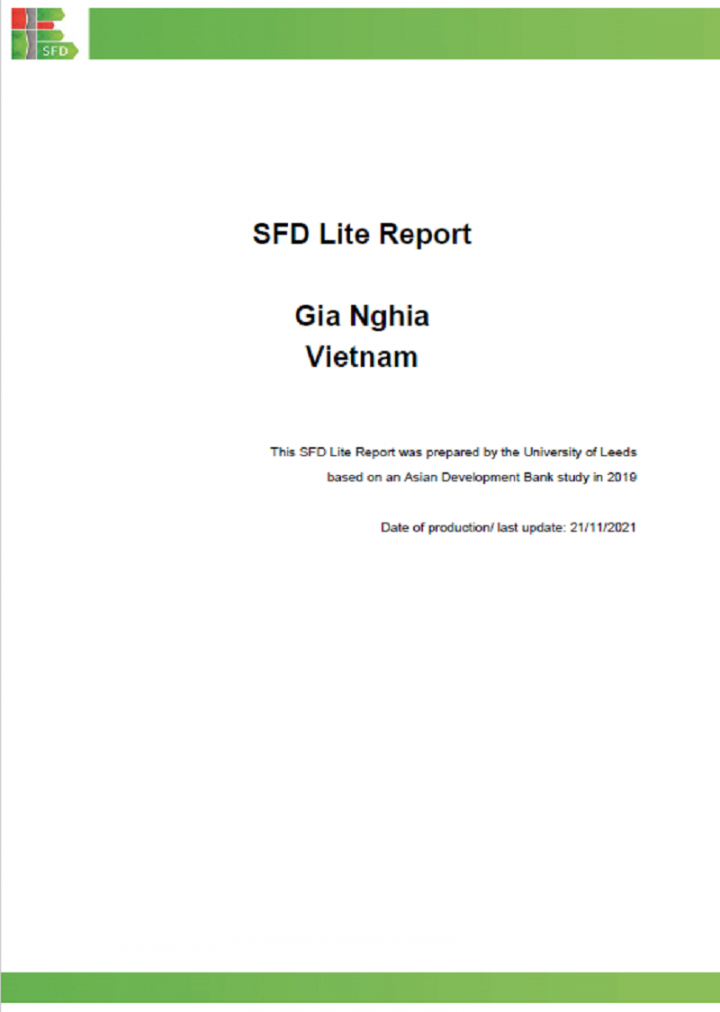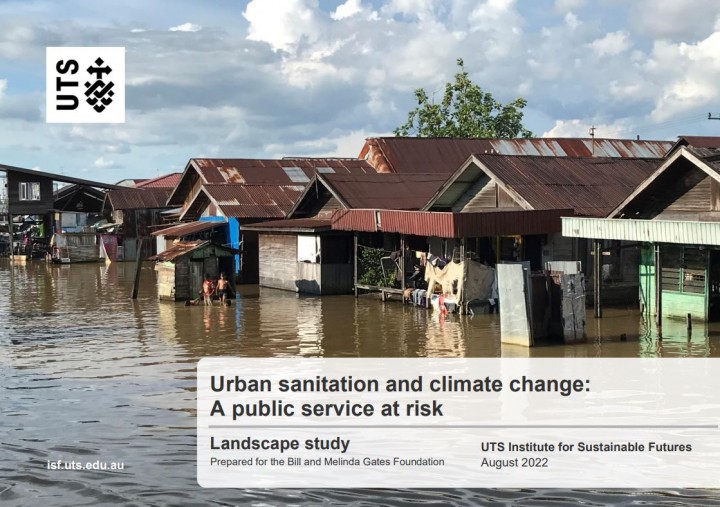Searching for information on Sanitation Workers?
The Sanitation Workers Knowledge + Learning Hub is the best source for all current news, trends, articles and updates on sanitation workers rights around the world.
The SuSanA Secretariat and the Interim Steering Committee (ISC) officially announced the Election Results of the first Global Steering Committee (GSC) on Friday, 21st of October, from 2-2.30 pm CEST.
Thanks to the 247 SuSanA Members that casted their vote, for supporting us in this process! We hope to achieve an even higher turnout in the next GSC elections.
SuSanA would not exist and be …
The rural water supply scheme (WSS) in Sri Lanka is threatened by multiple climate risks such as flash floods, droughts, landslides, and salinity intrusion. Those rural water supply schemes are managed by Community-Based Organizations (CBOs) and Local Authorities and offer water to 12% of the people who live in marginalized areas through piped systems. Even though Water Safety Planning (WSP) is …
Menstrual Health & Hygiene Management (MHH) is a topic of concern for health, education, human rights, water, and sanitation sector. In Pakistan, more than 42 million (roughly 22%) girls aged between 10 to 19 years are at menstruation age1. Pakistan has the world’s second-highest number of out-of-school children with an estimated 22.8 million children, of which the majority are girls. The net …
Nepal has relatively high inland water resources and is geographically diverse. It is topographically divided into three regions: high Himalaya, middle Hill, and low land Terai. Due to such diversity, the drinking water services are different in all regions. In Himalayas and Hilly regions, water supply systems are mainly through gravity flow whereas hand-pumps and deep boring are in Terai. As per …
The right to water and sanitation entitles everyone to have access to sufficient, safe, acceptable, physically accessible, and affordable water for personal and domestic use. In 2010, the UN General Assembly and the Human Rights Council recognized clean drinking water and safe sanitation to be human rights, essential to the full enjoyment of life and all other human rights. Additionally, …
Water is one of the most important natural resources of the nation. Nepal has an abundance of water resources, including snowpacks, rivers, springs, lakes, and groundwater. Rivers, streams, lakes, reservoirs, springs, and groundwater are the major sources of drinking water. Tap or piped water, tube wells or hand pumps, covered or uncovered wells, spout water, rainwater collection, and river or …
Access to safe water and sanitation is essential for unlocking economic development and improving the health and education of all. Sustainable Development Goal (SDG) No. 6 aims to ensure the availability and sustainable management of water and sanitation for all by 2030. Water Sanitation and Hygiene (WASH) also contributes to numerous other goals, including those relating to nutrition, health, …
Chhattisgarh is a state in central India. Water contamination has always been a matter of grave concern in numerous areas of Chhattisgarh. Groundwater here faces contamination with fluoride, iron, turbidity, arsenic, nitrate, etc. Monitoring groundwater quality is essential through representative sampling in different hydrological units. The chemical water quality is monitored by Central Ground …
Menstrual hygiene management (MHM) relates to how girls and women manage their monthly menstruation and require access to information about menstruation, clean and safe menstrual absorbents, amenities, and facilities such as toilets and water, and waste management to maintain hygiene. MHM in general is poor in India due to a low level of knowledge and many misconceptions about it. In recent …
The Royal Government of Bhutan and in particular, the Ministry of Health (MoH) has been concerned with the high prevalence of sanitation and hygiene-related diseases. This was largely due to low coverage of hygienic pour-flush toilets; high prevalence of inferior quality pit toilets (without slab/cover) which were unsanitary and unhygienic; and households without toilets. The Bhutan Multiple …
In August 2017, thousands of Rohingya flee their homes in Myanmar and arrived at Cox’s Bazar, Bangladesh. As of April 2022, there were 925,380 refugees accommodated in 34 camps around the towns of Ukhiya and Teknaf. Rohingya refugees and host communities in Cox’s Bazar live with inadequate water and sanitation facilities resulting in adverse health impacts. Besides this, such huge influxes of …
Bangladesh is the eighth-most populous country in the world, with a population exceeding 166 million people in an area of 147,600 square kilometres making it one of the most densely populated countries in the world.
About a million Rohingyas have fled due to the ethnic cleansing in Myanmar and sought refuge in Bangladesh. The refugees are in temporary settlements in hilly areas of Cox’s …
Globally, at least two billion people use a drinking water source contaminated with faeces1. As result of microbial contamination with faeces, it poses the greatest risk to drinking-water safety. In 2010, the UN General Assembly explicitly recognized the human right to water and sanitation. Everyone has the right to sufficient, continuous, safe, acceptable, physically accessible, and affordable …
According to Joint Monitoring Programme, 58.5% have safely managed services for drinking water in 2020. One in five households has to spend more than 30 minutes fetching water from an outside source. The statistics also suggest a serious gap in sanitation facilities; about one-third of the households (31%) use unimproved toilet facilities; 22% of households use pit latrines without slabs, and 3% …
Adolescence is a vital period for human development as life enters a new phase with the onset of menstruation for girls. This new change sometimes leads many adolescents to experience stigma, bullying and social exclusion, also introducing them to new vulnerabilities. In many parts of Bangladesh, menstruation is a taboo and has myths attached to it which can lead to poor personal hygiene and …
Afghanistan is affected by manmade and natural disasters, which have caused a significant displacement of people. People often move from their place of origin to cities and are settled in areas where access to safe drinking water is limited. In 2020, only 47.5 per cent of the population had access to basic drinking water services and 38.1 per cent had basic hygiene services1. As a result, …
The GIZ Programme Water Supply and Sanitation for Refugee Settlements and Host Communities in Northern Uganda (WatSSUP) operates on the nexus of humanitarian and development work and focuses on both refugee and host communities. The programme is implemented under the special initiative on forced displacement of the German Federal Ministry for Economic Cooperation and Development (BMZ). This is in …
The GIZ Programme WatSSUP operates on the nexus of humanitarian and development work and focuses on both refugee and host communities. The programme is implemented under the special initiative on forced displacement of the German Federal Ministry for Economic Cooperation and Development (BMZ) and implemented by GIZ in line with Germany’s commitment to international burden and responsibility …
The observations and recommendations presented in this gender analysis are meant to provide information to the programme regarding the relevance of gender aspects in Uganda, and particularly for the continued implementation process of the Programme: Water Supply and Sanitation for Refugee Settlements and Host Communities in Northern Uganda (WatSSUP).
The GIZ Programme WatSSUP operates on the nexus of humanitarian and development work and focuses on both refugee and host communities. The programme is implemented under the special initiative on forced displacement of the German Federal Ministry for Economic Cooperation and Development (BMZ) and implemented by GIZ in line with Germany’s commitment to international burden and responsibility …
The WatSSUP Cash for Work (CfW) tree planting activity takes place between April and November 2022. It aims at improving the water source protection of water supply system catchment areas as well as delivering positive impact on household incomes. The activity covers a total of 18 acres in the West Nile Region in Northern Uganda. 9 acres of trees are planted in Yumbe district (Bidibidi refugee …
Gia Nghia is a small but quickly growing and urbanising town. 87% of households have water supply provided on premises with projects underway to bring this to over 90%, and 100% of the population has access to a sanitation system (no open defecation is reported). Waste stabilisation ponds were constructed to treat wastewater, but these are not operational due to a lack of connections to the sewer …
Water and sanitation (wastewater) infrastructure in the United States is aging and deteriorating, with massive underinvestment over the past several decades. For many years, lack of attention to water and sanitation infrastructure has combined with racial segregation and discrimination to produce uneven access to water and wastewater services resulting in growing threats to human and …
The study provides recent advances and adaptations in policy, planning and service delivery to better manage climate related risks in urban contexts. It also identifies actionable strategies to support efforts to improve climate resilience in urban sanitation and to strengthen the argument for their implementation
Punta del Diablo is located on the Atlantic Ocean coast of Uruguay in the department of Rocha. The city is made up of six large sub-divisions: Punta del Diablo, Coronilla del Mar, Aldea del Mar, Santa Teresa de la Coronilla, Parque Santa Teresa and Santa Teresa (D&A and EP, 2021). For this report, a total population of 23,128 is estimated. Comprising a resident population of 2,000 people and a …

